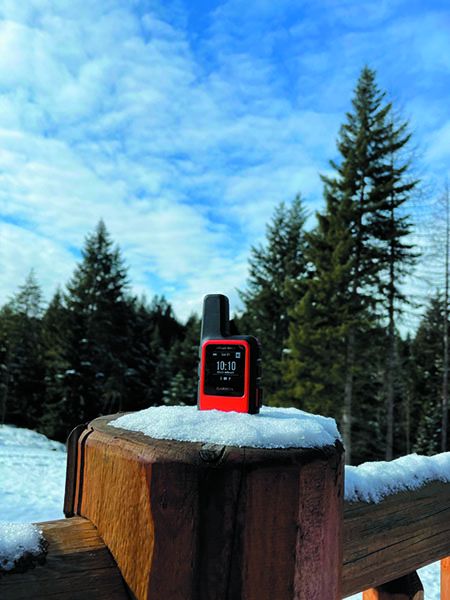Thanks to the internet allowing me to work from anywhere that has a high-speed connection, my wife and I have chosen to live in the mountains near a very user-friendly, general aviation airport (Boundary County, Idaho, 65S). That means that we spend time flying into backcountry airports, boating on remote lakes and hiking where we don’t see anyone for hours. That’s the good news—it’s lovely country.
The bad news—if something goes wrong—is that we fly into backcountry airports, boat on remote lakes and hike where we don’t see anyone for hours.
I’ve handled the risk of problems developing away from civilization by carrying a Personal Locator Beacon (PLB), making sure that my cellphone battery was fully charged before departure on any trip, doing a careful preflight and refusing to go into the backcountry if there were a whiff of a problem, and wearing a survival vest. I also made sure that someone who could call search and rescue folks knew where I was going and was spring-loaded to do so if I didn’t call them by a designated time.
Despite being fairly careful before heading for the wilderness, I’ve found that I’m less and less comfortable doing so, especially during the colder times of the year.
And, no, summer around here really isn’t just two weeks of lousy snowmobiling, but the idea of getting stranded in the middle of nothing but miles and miles without a way to communicate has become less and less attractive. Plus, my PLB is coming up on the end of its useful life and it’s time to consider whether I should replace it or go with another option.
One friend, who really goes off the beaten path regularly in Alaska and Arizona, purchased a satellite phone. My research into doing so as we’ll made it pretty clear that a sat phone wouldn’t fit into the family budget. Plus, with the cost of making a call versus texting, I observed that if I got one, it would be primarily for sending text messages.
My next step was to look at subscription-based mobile tracking and communication devices. I’ve been discussing all of the above with Aviation Consumer’s editor, Larry Anglisano, for the last several months. Larry is far more technically savvy than I, so I listened when he suggested trying out Garmin’s new inReach Mini 2 because it does allow text messaging, pairs with an app on a smartphone to enable a large number of features, has GPS tracking that I can send to select people in real time and if things go south, I can push the SOS button to start the rescue process and message with rescue authorities while they are coming my way.
I agreed under the condition that Larry not point and laugh as I went through my usual struggles trying to set up and activate any electronic device. My default is a unit like a PLB—you register it when you get it and then it sits there quietly until you need it and when you need it it’s dirt simple to use.
I’m also not exactly crazy about a device that can save my life but only if I’m up to date in my subscription payments. Nevertheless, I’m now starting a multi-month user test of the inReach Mini 2. That’s a photo of it on my deck, standing 3.9 inches tall (I like the small size a lot) and in full and fearless contact with the Iridium satellite constellation and my cellphone.
Details—The Mini 2, an upgrade of the popular Mini, lists for $395. It requires buying one of several service plans with varying levels of text messages per month and frequency at which it sends out tracking information. All plans include unlimited SOS and preset messages. Under a contract that lasts a year, the monthly rates are $11.95 for the “safety” plan, $24.95 for the “recreation” plan and $49.95 for the “expedition” plan. There is a $29.95 initial activation fee.
A user may opt for a “freedom” plan, and pay for satellite airtime service when needed, 30 days at a time. Buying the freedom plan costs $34.95 for a year and allows bouncing between safety, recreation and expedition at will (30 days at a time), or going with no service if not needed. Under the freedom plan “safety” is $14.95, “recreation” is $34.95 and “expedition” is $64.95.
It took me 90 minutes to initially activate my new Mini 2, pair it with my cellphone and have the phone load the latest update to the Mini as we’ll as begin creating contacts that I can message. Right now the learning curve to figure out the other features feels daunting.
It seems strange to me to need to use a second device—my cellphone—to get all of the features of the primary device. I recognize that is becoming more and more popular, but I’m of the aviation school that more stuff in a system means more risk of something going wrong. I’ll let you know how it works.
—Rick Durden


